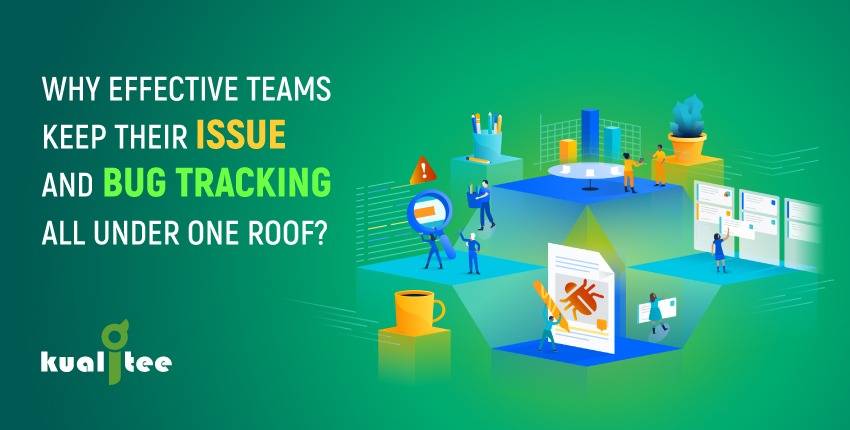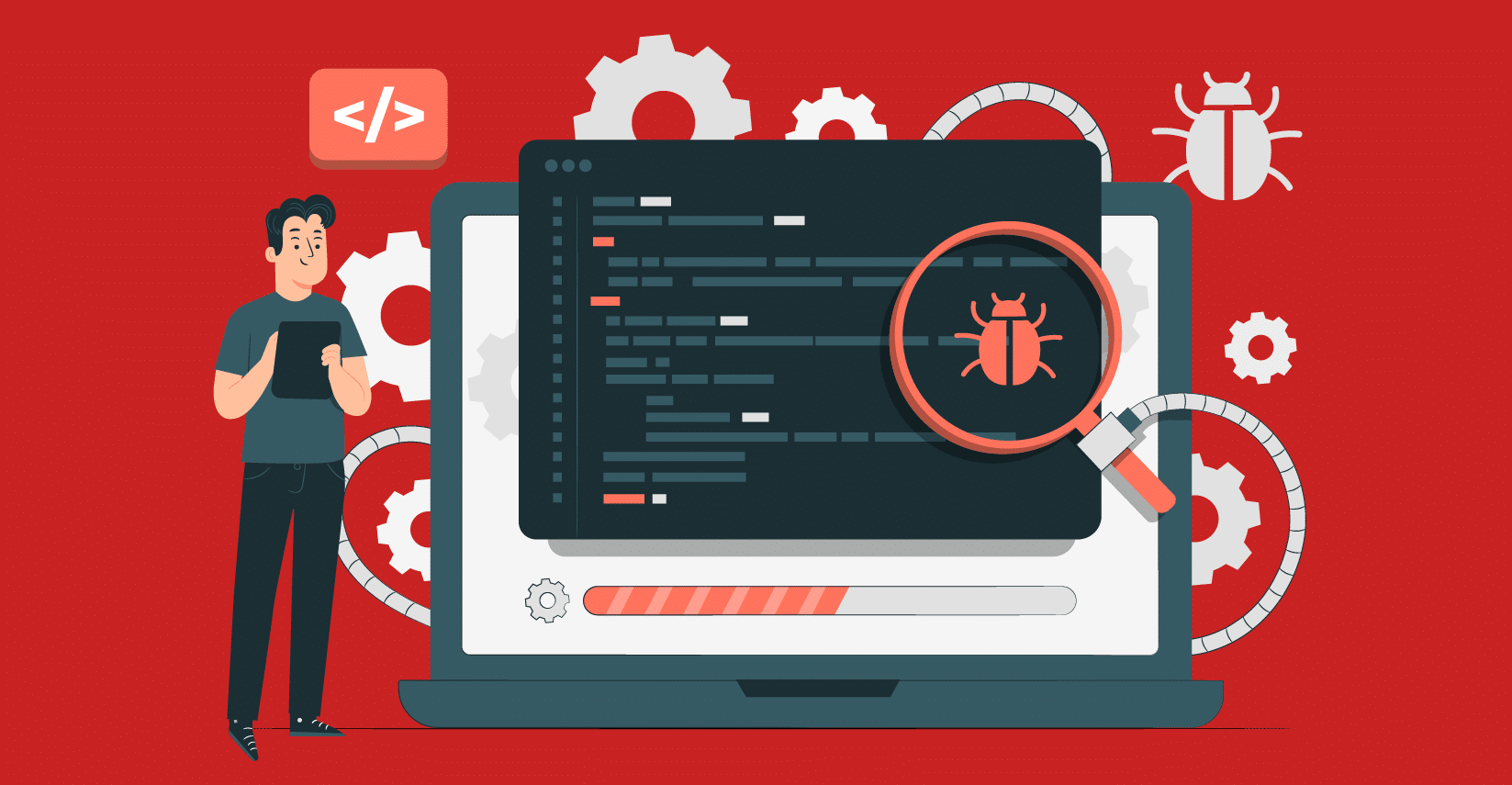Majority of the companies enable the departments to select their preferred issue and bug tracking tools. Letting departments to select their own systems and apps makes sense: It makes an improved workflow within the departments so that people can work as a cohesive unit. The system proves itself valuable until the work gets completed efficiently.
Unfortunately, that is not generally the scenario for bigger companies. Segmented systems and apps influence the company as a whole. What might be appropriate for department A, might not be preferred by the department B and C. In the meantime, there will be a communication gap amongst all the departments. As a result, department A’s tasks are not going to be resolved. Once this occurs, holes and gaps will surface often and early like productivity sinkholes.
For this reason, effective teams keep their bug and issue tracking under a single roof.
Operations tend to become messy unless they are united under one system. Rather than bringing everybody together, departments unintentionally put walls up between them and vital departments they deal with on a daily basis. Communication becomes vulnerable instead of refined, with these walls in place. Statuses, bandwidth, messages, and schedules become unapproachable.
Therefore, it is important for the organizations to keep their operations close-knit and the department’s system. This promotes efficient workflows and teamwork and solves many issues of your project managers.
Relief from Headache
Observing some common challenges that Project Managers face, we must look at the list of the problems if the department is not aligned. Even though your team’s issue and bug tracking options would not completely diminish these challenges, they are valuable steps in the correct direction.
Look have a quick glance at the most common challenges if the company fails to get on the same page.
1. Blame Game Due to Less Accountability
You often feel less accountability if there are barriers between departments and teams. Communication fails, when teams cannot get on the same page regarding the issue and bug tracking.
Departments start blaming each other, i.e. support team blames the developers and the developers blame the product managers. Everything turns into a mess, and no one has an idea where the things fell apart. As a consequence, things stop working.
With severe issues and failed deadlines, companies and teams find themselves in a costly place. Perhaps, the budget needs to expand and the scope requires adjustments. These gaps can even result in project cancellation.
2. Risk Management Becomes Extremely Difficult
Risk management is ought to complexed when then tracking is not under a single roof. How can you prepare for anything that you are not aware of?
Important planning information perhaps never reaches the correct department or person, by putting up technological walls between the teams. in addition, this influences more than only the project manager.
Any resource who is allotted to the affected tasks will observe the outcomes of a mismanaged project, and the root cause is miscommunication. Therefore, everyone is left with extra work and, perhaps, a few angry people to report to.
3. Poor Communication
This is the most noticeable pain. Very infrequently, if ever, does a department or a colleague intentionally engrosses in poor communication. Instead, it develops over time.
With different systems in place, it is simple to create an echo chamber of sorts. Minus the external voices, the agreed-upon systems become deep-rooted, and teams become cloistered in their operations and procedures. When the time arrives to connect across departments, important information slips through the cracks because of lesser knowledge regarding how others operate and work.
The good news is that the problems can be fixed. Although, it is suggested that you must address these issues as quickly as possible. Taking longer will create difficulties in the long-run.
Kualitee Is A Solution for All These Problems
The most convenient solution to these problems is to bring all the operation under a single roof. This means that the companies should choose a solution that enables both issue and bug tracking. Kualitee does it all.
Kualitee is one of the best could-based test management solutions that support both manual and automated testing. Its integration with Jira, Selenium, Bitbucket, and Jenkins allows you to perform your tests effectively and efficiently. Other than this, it provides a user-friendly interface, email-notifications, enhanced security, multiple test cycles, formats and access mediums, flexible user control, laser focus visibility, mobile app test management, automated testing, defects management, test case management, requirement planning, and a powerful dashboard. As a consequence, it reduces the stress level of the project and saves you from the hassle.
This test management tool has a feature of defect management which gives you a detailed picture of the types of defects. After being recorded the bugs could be tracked in various methods. You can see bug history anytime with various information pointers. It provides more than what any defect management software provides.
The rich information format and interactive dashboard enable you to report and track defects. These defects can now be traced back and forth within the cycles and are related to the referenced test cases.
It creates custom defect reports that can take advantage of the two-way integration with JIRA, a defect management software. It enables you to create a custom field to make this integration more suitable under your business context.
This tool enables you to sync your defects with JIRA in a simple setup selection. It’s ideal for scattered teams where the Business Analysts and testers can coordinate with two different tracking tools. The issues/defects on a platform are logged on the other.
The separate architecture can enable you to log your defects independent of test cycles and modules and use them again and again. In technique create ease in a way that defect cannot be created repetitively in a case or module.
Results
After bringing your issue and bug tracking systems under one roof, you must expect to view the outcomes in short order. Preferably, you will have selected tools that support the requirement of development, support and production. Doing this, inter-department communication enhances and staying on a track becomes little simpler.
Teams begin to see more visibility into their other team member’s work. Having this insight advantages employees in various methods. For example:
If a comparable issue continues to arise in department A, someone in department B might have the explanation from an outside perspective.
When it comes to predicting work, having the ability to view everyone’s calendar assists everyone lay out their plans more precisely.
In addition, this makes easier to take practical measures when schedules may misalign or clash. If caught in a beginning phase, departments can cooperate to determine a beneficial road map.
Conclusion
If your team is only in the beginning phase, you must keep your work under one roof. If you are on an established team and require to shift gears, these variations may be difficult to apply, but they make the long road ahead much simpler for everyone. Irrespective your team, they will all be grateful for the migration in time. When implemented appropriately, communication, efficacy, and, hopefully, employee satisfaction will grow.


























